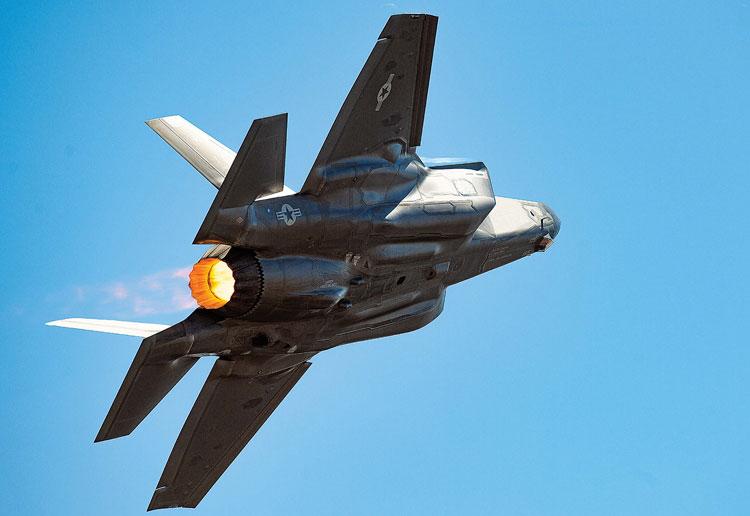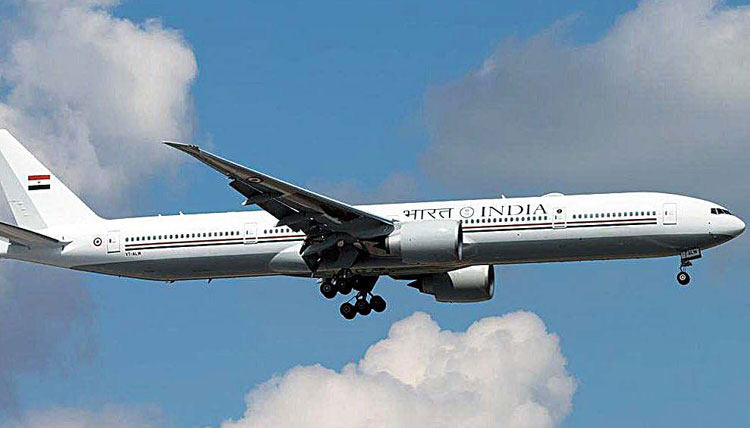INDIAN ARMED FORCES CHIEFS ON OUR RELENTLESS AND FOCUSED PUBLISHING EFFORTS

The insightful articles, inspiring narrations and analytical perspectives presented by the Editorial Team, establish an alluring connect with the reader. My compliments and best wishes to SP Guide Publications.

"Over the past 60 years, the growth of SP Guide Publications has mirrored the rising stature of Indian Navy. Its well-researched and informative magazines on Defence and Aerospace sector have served to shape an educated opinion of our military personnel, policy makers and the public alike. I wish SP's Publication team continued success, fair winds and following seas in all future endeavour!"

Since, its inception in 1964, SP Guide Publications has consistently demonstrated commitment to high-quality journalism in the aerospace and defence sectors, earning a well-deserved reputation as Asia's largest media house in this domain. I wish SP Guide Publications continued success in its pursuit of excellence.
The Growing Significance of Aerial Self-Protection Systems
The immense popularity of Self-Protection Suites (SPS) despite their cost, indicates that the missile threat to high value aircraft is increasing

In October 2020, two remarkable new aircraft arrived in India. They are custom-built Boeing 777-300ER wide-body planes for use by Prime Minister Narendra Modi and other VVIPs. Although the Boeings are part of Air India’s fleet, they are flown by Indian Air Force (IAF) pilots. One reason for the IAF’s close involvement is that the two aircraft have ultramodern aerial defensive systems designed to avert or frustrate missile attacks. Called the Large Aircraft Infrared Countermeasures (LAIRCM) Self-Protection Suites (SPS) these systems come under a hefty $190 million deal.
In earlier days, self-protection systems were essentially meant for combat aircraft, while other aircraft simply flew out of range of missile threats. However, the growing lethality and complexity of long-range missiles means that no aircraft is safe from attack. That is why aerial SPS are becoming ubiquitous.
SURVIVAL STRATEGY
When an aircraft flies in a potentially hostile environment, a host of factors determine whether or not it will emerge unscathed. The most important factor is the aircraft’s threat detection and selfprotection capability. One essential feature is a good Radar Warning System (RWS), for instance, Raytheon’s ALR-69A, the world’s first all-digital RWS. It claims to provide long-range detection and accurate identification even in dense signal environments.
The three basic means aircraft need to adopt to stay safe are - avoid or delay detection, jam hostile sensors and deceive the sensors to look elsewhere. Most SPS are effective either by blinding the guidance systems of incoming missiles with laser and radio frequency-based countermeasures or by confusing them with the help of chaff and flares.
When it comes to delaying detection, stealth has been the device of choice for over two decades. Combat jets such as the Lockheed Martin F-22 Raptor have their radar signature reduced in the most vulnerable frequency bands such that they become near-immune to radar detection, except at very short range. However, this obviously cannot be achieved on large aircraft such as aerial tankers and airborne command posts. Besides, even as stealth has advanced, sensors have progressed to include heat, noise, visual signature and various electro-magnetic emissions over a wide spectrum.
Jamming is a simple technique to saturate the enemy’s radar with electronic noise and so deny or at least degrade detection. However, it requires considerable power to generate this noise and an airborne platform cannot win a “power-pumping” battle against ground-based systems. The defender’s counterjamming techniques have also correspondingly advanced.

Deception is a useful military tactic and aircraft seeking to avoid detection must avoid predictable routes or operating patterns. The advent of drone swarms can also help divert the enemy’s attention away from the high-value target. Similarly, chaff can be released to confuse the attacker.
The SPS on the special Boeing 777-300ER aircraft referred to earlier, consists of a Northrop Grumman AN/AAQ 24(V)N LAIRCM, a Harris ALQ-211(V)8 Advanced Integrated Defensive Electronic Warfare Suite (AIDEWS) and a BAE Systems AN/ALE-47 Counter-Measures Dispensing System (CMDS).
ALERT – MISSILE LAUNCH!
In case a heat-seeking missile is launched, the aircraft under threat would be alerted by onboard devices and indicators such as infrared or ultraviolet sensors that can detect the missile’s hot exhaust plume. The kinetic kill of the incoming missile may neither be effective nor advisable keeping in mind the safety of the host platform. However, various CMDS are available in the market that can release both IR flares and chaff to mislead the incoming missile. Active Electronic Warfare (EW) expendable decoys are popular options. Leonardo’s BriteCloud packs digital protection against radar-guided missiles into a tiny package that can be released from the same launcher as a standard 55 mm flare.
Most combat aircraft have some type of SPS that can assess various emerging threats to the aircraft and prioritise the appropriate response using a CMDS and a laser or microwave firing Directed Infrared Countermeasures (DIRCM) system. A DIRCM is designed to provide 360-degree protection to the host aircraft. It works by aiming a jamming laser onto the missile’s seeker, confusing its guidance system and deflecting the missile harmlessly away.
Germany-based multinational Hensoldt’s AMPS-MV (Airborne Missile Protection System with Missile Verification Sensor) is a complete stand-alone SPS from detection to protection. It offers easy integration as no avionics interface is required. It features a combination of active and passive technology to secure a significant reduction of the false alarm rate (FAR), which has long been a serious issue with airborne SPS. Since the AMPS-MV assures a near-zero FAR, the risk of running out of countermeasures (flares) is greatly reduced. This also improves aircraft survivability especially during night time by avoiding unintended tell-tale flare deployment. Various subsystems can be integrated with the AMPS-MV including a Missile Warning System (MWS), a Laser Warning System (LWS), an RWS, a CMDS, and a DIRCM.
Another cutting-edge system is the J-Multi-Spectral Infrared Countermeasure (J-MUSIC) DIRCM. Produced by Israel’s ELBIT, it has been successfully integrated with the Airbus A-330 Multi-Role Tanker Transport (MRTT) as well as the Airbus A-400M transport aircraft.
WHO WILL WIN – THE CAT OR THE MOUSE?
The immense popularity of SPS despite their cost indicates that the missile threat to high-value aircraft is increasing. At present, the equation between the attacker and the defender is reasonably balanced. However, in the medium term, it is likely that aircraft will be at some disadvantage in this cat-and-mouse game because they can only carry a limited amount of defensive equipment as compared to ground-based systems. As missiles and their guidance systems become ever more lethal and capable, the manufacturers of self-protection systems must constantly strive to remain abreast.





